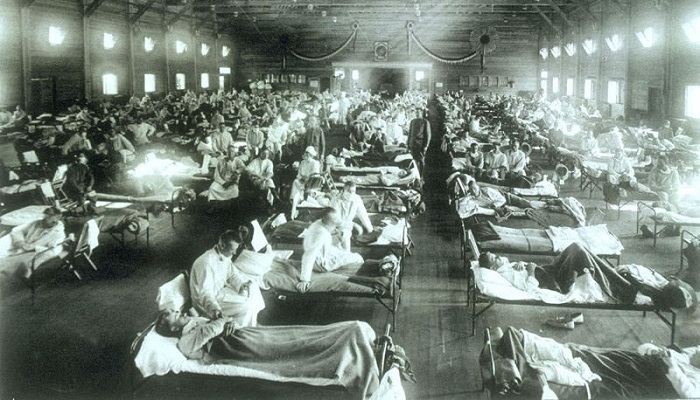使用Player FM应用程序离线!
1918 Flu Pandemic Lessons
Manage episode 229666417 series 86854

BOB HIRSHON (host):
A century of flu lessons. I’m Bob Hirshon and this is Science Update.
100 years ago, the 1918 influenza pandemic claimed more than 50 million lives.
CAROLIEN VAN DE SANDT (Doherty Institute/University of Melbourne):
And it’s actually the most deadly pandemic that has ever occured in human history. 1
HIRSHON:
University of Melbourne researcher Carolien van de Sandt says we’re still at risk for new pandemics. In order to better prepare, her team has analyzed what made the 1918 flu so deadly. They write in Frontiers in Cellular and Infection Microbiology that mutations to the virus sent immune systems into overdrive, and also made it more transmissible. Young adults were most at risk then, but today, malnutrition, obesity, and secondary bacterial infections could make a pandemic more deadly for some. What’s more, climate change affects where new flu strains emerge.
VAN DE SANDT:
It’s hard to believe how bad it can be and maybe we underestimate it a little bit. 3
HIRSHON:
I’m Bob Hirshon, for AAAS, the science society.
Story by Susanne Bard
The post 1918 Flu Pandemic Lessons appeared first on Science Update.
34集单集
Manage episode 229666417 series 86854

BOB HIRSHON (host):
A century of flu lessons. I’m Bob Hirshon and this is Science Update.
100 years ago, the 1918 influenza pandemic claimed more than 50 million lives.
CAROLIEN VAN DE SANDT (Doherty Institute/University of Melbourne):
And it’s actually the most deadly pandemic that has ever occured in human history. 1
HIRSHON:
University of Melbourne researcher Carolien van de Sandt says we’re still at risk for new pandemics. In order to better prepare, her team has analyzed what made the 1918 flu so deadly. They write in Frontiers in Cellular and Infection Microbiology that mutations to the virus sent immune systems into overdrive, and also made it more transmissible. Young adults were most at risk then, but today, malnutrition, obesity, and secondary bacterial infections could make a pandemic more deadly for some. What’s more, climate change affects where new flu strains emerge.
VAN DE SANDT:
It’s hard to believe how bad it can be and maybe we underestimate it a little bit. 3
HIRSHON:
I’m Bob Hirshon, for AAAS, the science society.
Story by Susanne Bard
The post 1918 Flu Pandemic Lessons appeared first on Science Update.
34集单集
Minden epizód
×欢迎使用Player FM
Player FM正在网上搜索高质量的播客,以便您现在享受。它是最好的播客应用程序,适用于安卓、iPhone和网络。注册以跨设备同步订阅。




